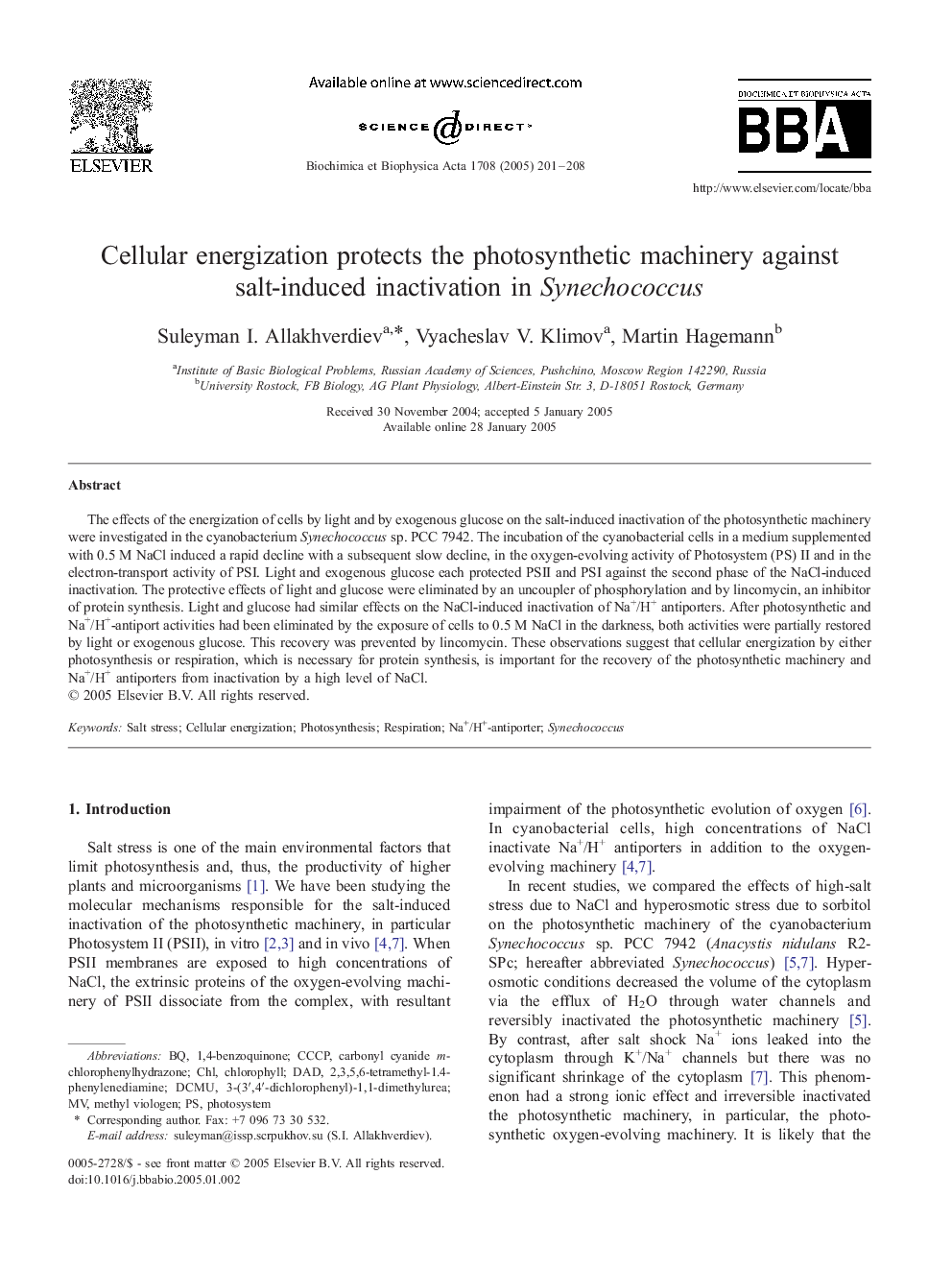| Article ID | Journal | Published Year | Pages | File Type |
|---|---|---|---|---|
| 10796121 | Biochimica et Biophysica Acta (BBA) - Bioenergetics | 2005 | 8 Pages |
Abstract
The effects of the energization of cells by light and by exogenous glucose on the salt-induced inactivation of the photosynthetic machinery were investigated in the cyanobacterium Synechococcus sp. PCC 7942. The incubation of the cyanobacterial cells in a medium supplemented with 0.5 M NaCl induced a rapid decline with a subsequent slow decline, in the oxygen-evolving activity of Photosystem (PS) II and in the electron-transport activity of PSI. Light and exogenous glucose each protected PSII and PSI against the second phase of the NaCl-induced inactivation. The protective effects of light and glucose were eliminated by an uncoupler of phosphorylation and by lincomycin, an inhibitor of protein synthesis. Light and glucose had similar effects on the NaCl-induced inactivation of Na+/H+ antiporters. After photosynthetic and Na+/H+-antiport activities had been eliminated by the exposure of cells to 0.5 M NaCl in the darkness, both activities were partially restored by light or exogenous glucose. This recovery was prevented by lincomycin. These observations suggest that cellular energization by either photosynthesis or respiration, which is necessary for protein synthesis, is important for the recovery of the photosynthetic machinery and Na+/H+ antiporters from inactivation by a high level of NaCl.
Keywords
Related Topics
Life Sciences
Agricultural and Biological Sciences
Plant Science
Authors
Suleyman I. Allakhverdiev, Vyacheslav V. Klimov, Martin Hagemann,
